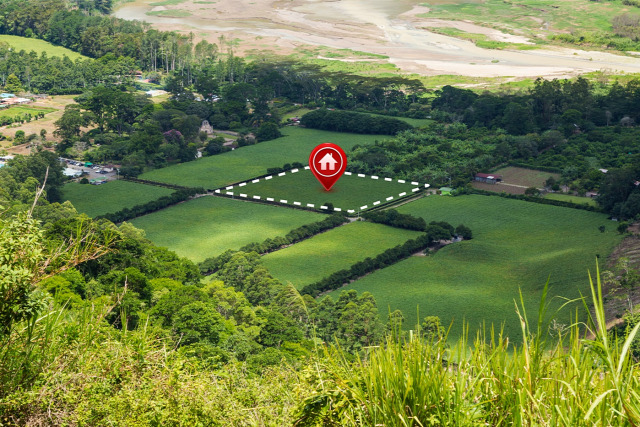
In the era of precision agriculture, understanding soil health and composition has become paramount for optimizing crop yields and ensuring sustainable farming practices. Digital soil mapping platforms and applications are at the forefront of this agricultural revolution, providing detailed insights that empower farmers and agribusinesses to make informed decisions. This article delves into the burgeoning digital soil mapping market, highlighting key trends, market segmentation, growth projections, and how various industries are leveraging these advancements to stay competitive.
Market Overview: Robust Growth Trajectory
The global digital soil mapping platforms and applications market is experiencing significant growth. Valued at $228.2 million in 2023, it is projected to reach $798.5 million by 2034, registering a compound annual growth rate (CAGR) of 12.16% during the forecast period of 2024-2034. This upward trend is driven by the increasing adoption of precision agriculture, advancements in geospatial technologies, and a heightened focus on sustainable farming practices.
Key Trends Shaping the Market
Integration of IoT and Advanced Sensors:
- IoT devices and sensors enable real-time monitoring of soil moisture, temperature, and nutrients.
- Helps in precision irrigation and fertilization, improving crop yields.
Adoption of AI and Machine Learning:
- AI-driven analytics predict soil health trends and pest infestations.
- Machine learning enhances decision-making for farm management.
Focus on Sustainable Agriculture:
- Soil mapping tools aid in regenerative farming by tracking organic matter and erosion risks.
- Supports biodiversity and long-term soil health.
Government Initiatives and Support:
- Subsidies and policies encourage farmers to adopt digital agriculture solutions.
- Helps boost food security, especially in developing regions.
Request for a sample research report on the digital soil mapping platforms and applications market
Key Market Segmentation
Segmentation 1: by Application
- Agriculture Cooperatives
- Government and Private Research Institutes
- Agribusiness Companies
- Others
Segmentation 2: by Product Type
- Drone Scouting
- Mobile Scouting
- Satellite Imagery
Segmentation 3: by Region
- North America
- Europe
- Asia-Pacific
- Rest-of-the-World
The North America region dominated the global digital soil mapping platforms and applications market and is expected to maintain its dominance over the forecast period from 2024 to 2034. The region is home to multiple leading companies, including Trimble Inc., Deere & Company, and Ag Leader Technology.
Industries Leveraging Digital Soil Mapping
Various sectors are capitalizing on digital soil mapping technologies to enhance their operations and maintain a competitive edge:
- Agriculture: Farmers and agronomists use soil mapping to tailor crop management practices, leading to improved yields and resource efficiency.
- Environmental Management: Organizations involved in land conservation and environmental monitoring employ soil mapping to assess soil degradation and plan remediation efforts.
- Urban Planning and Construction: Urban planners and construction firms utilize soil data to inform land use decisions, ensuring infrastructure stability and sustainability.
Recent Developments in the Global Digital Soil Mapping Platforms and Applications Industry
In February 2024, EOS Data Analytics (EOSDA) announced a collaboration with AgriProve, Australia’s leading soiltech carbon developer, to enhance soil organic carbon (SOC) monitoring using AI-powered satellite imagery. This collaboration is supported by the Australian government with a $6.0 million grant. The collaboration aims to create detailed soil carbon maps and predictive models, offering farmers invaluable insights for optimizing land management practices and improving soil and climate resilience.
In January 2024, EarthOptics surpassed one million acres of physically mapped farmland and ranch land, positioning its SoilMapper platform as a market leader in comprehensive soil intelligence. Since 2021, the company has mapped land across four continents and 45 U.S. states, utilizing advanced technologies such as ground penetrating radar and electromagnetic induction scanning.
Get more insights on the agriculture market research reports.
Future Market Outlook
The digital soil mapping market is poised for continued expansion, driven by technological advancements and increasing awareness of sustainable agriculture. Key factors influencing future growth include:
- Technological Innovations: Advancements in remote sensing, data analytics, and machine learning will enhance the accuracy and usability of soil mapping platforms.
- Regulatory Support: Policies promoting sustainable agriculture and environmental conservation will encourage the adoption of digital soil mapping tools.
- Global Food Security Concerns: As the global population grows, optimizing agricultural productivity through precision farming practices will become increasingly critical.
Conclusion
Digital soil mapping platforms and applications are revolutionizing agriculture by providing detailed, actionable insights into soil health and composition. The market's robust growth trajectory reflects the increasing recognition of these tools' value across various sectors. As industries continue to prioritize sustainability and efficiency, integrating digital soil mapping into operational strategies will be essential for maintaining competitiveness and ensuring long-term success.

